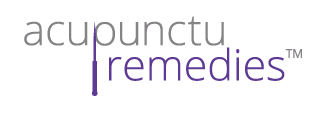People all over the world now look to acupuncture when they have a difficult issue to fix. However, it is far less common in the Western world to consider using this time-honored therapy for their children. A common misconception stands acupuncture treatment = needles only, and that children, who must be naturally afraid of needles, would not be able to handle the treatment well. The real issue is that many Westerners are not aware that the term “acupuncture” is a blanket term for a very flexible, often non-invasive, medicine. Do we use needles? Absolutely. Do we use them all the time? Definitely not! In certain cases (even with adults), needles are not a feasible treatment.

So what can we do instead?
- Acupressure – A specialized pressure technique that uses acupuncture meridians and points to promote healing.
- Shoni Shin – a Japanese form of acupressure, involving small implements that are rubbed across the skin over acupuncture meridians, but never inserted.
- Gua Sha – A Chinese rubbing technique somewhat similar to Shoni Shin, but the implements, hand technique, and focus are different.
- Tui Na – Chinese medical massage that focuses on the meridians
- Korean press pellet therapy – A specialized, pinpoint acupressure on a sticker that you wear home (similar to the Sea Bands idea, which were created based on multiple studies of a particular acupuncture point!)
In cases that needles are in fact used…
Assuaging a parent’s fear—needles are brand new, one-time use.
How do you get a child to lie still with needles? The answer is, they don’t have to! Typically, most children receiving needles do not get a “standard treatment,” where they would be expected to lie still with needles inserted. If needles are used, they are put in and removed immediately, quite often to a child’s great surprise! “What? You did it already?!”
– Even a momentary insertion in a strategic acupuncture point has therapeutic affect, particularly in children.
– Strategic, momentary insertion can release endorphins, thus making the individual receiving treatment feel quite relaxed
– blood and oxygen are drawn to the area, which “jump-starts” the body’s natural healing response.
 Assuaging an older child’s fear—This ain’t no hypodermic! Our needles are as thin as a human hair, and the average reaction is “Oh, that’s it?”
Assuaging an older child’s fear—This ain’t no hypodermic! Our needles are as thin as a human hair, and the average reaction is “Oh, that’s it?”
How effective is all this “pressure therapy?” Consider that children are quick to become ill, but equally quick to bounce back. That’s because a tender young body might react quite suddenly to illness, but they also have a faster propensity to heal than an adult can. Receiving specified healing treatment on key areas needing attention when a body’s immunity is low can often create astonishing improvements in a person’s health, whether that pressure is created by needles, or by an external force. That wonderful ability children have to “bounce back” is why they can improve with a milder form of acupuncture , and not necessarily require needles. This is the same theme when your child is seen at the pediatrician’s office, and your doctor tells you that your child needs no medicines or antibiotics, just rest and fluids.

